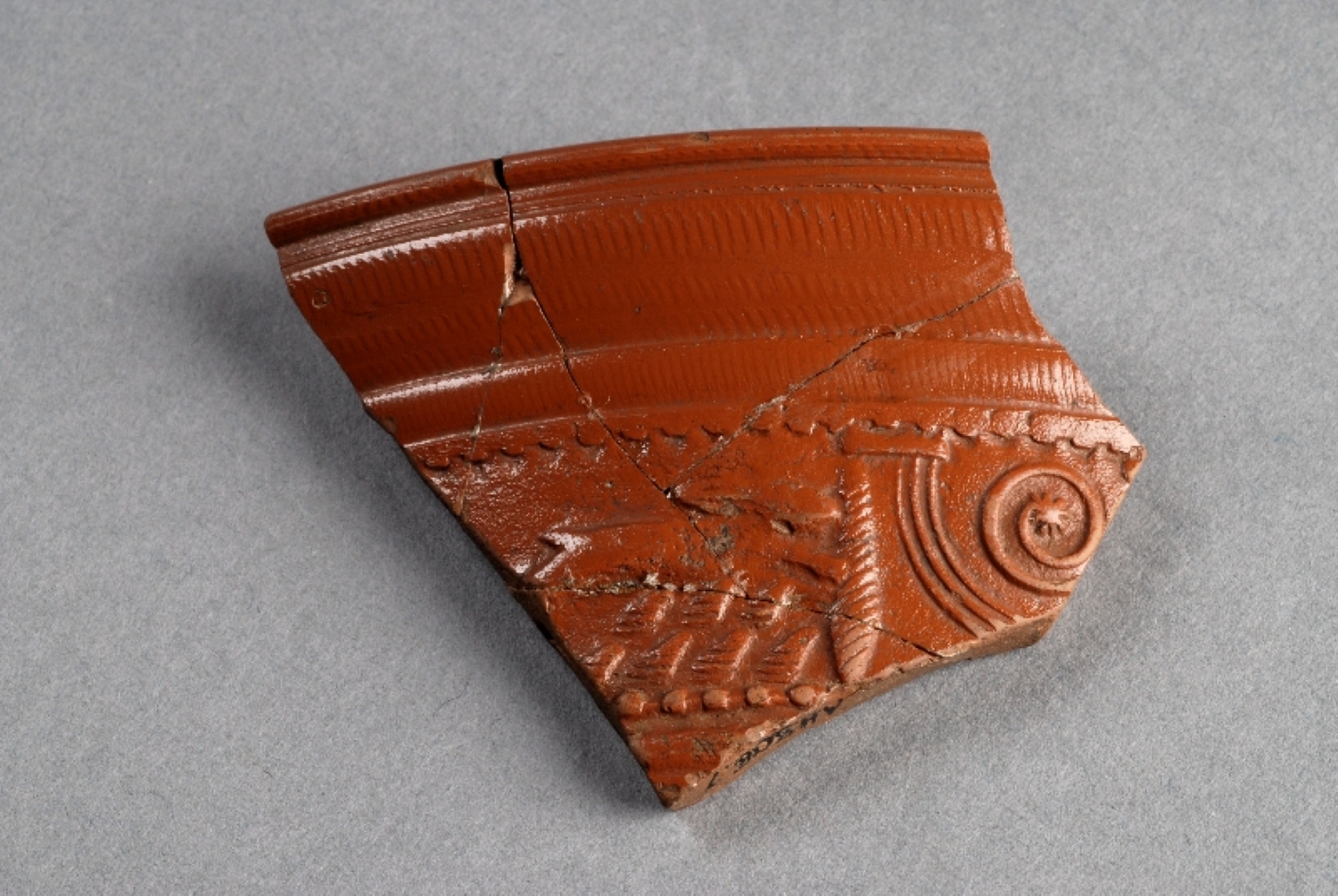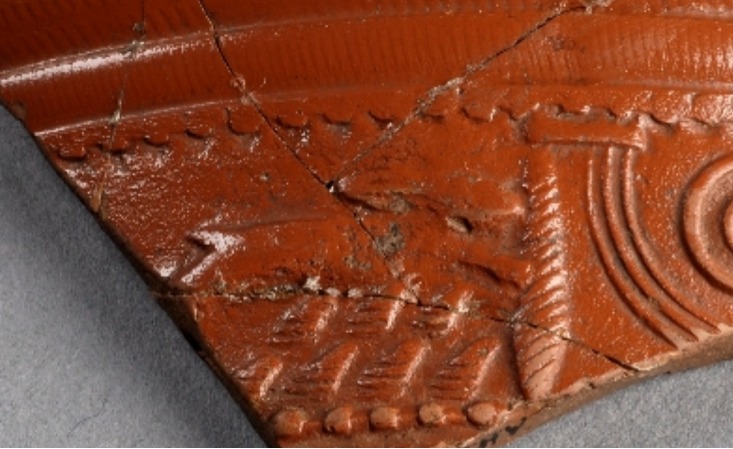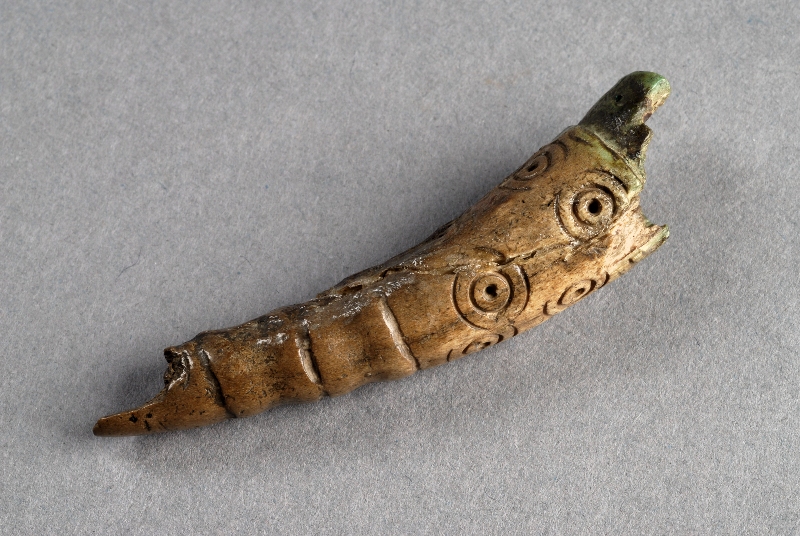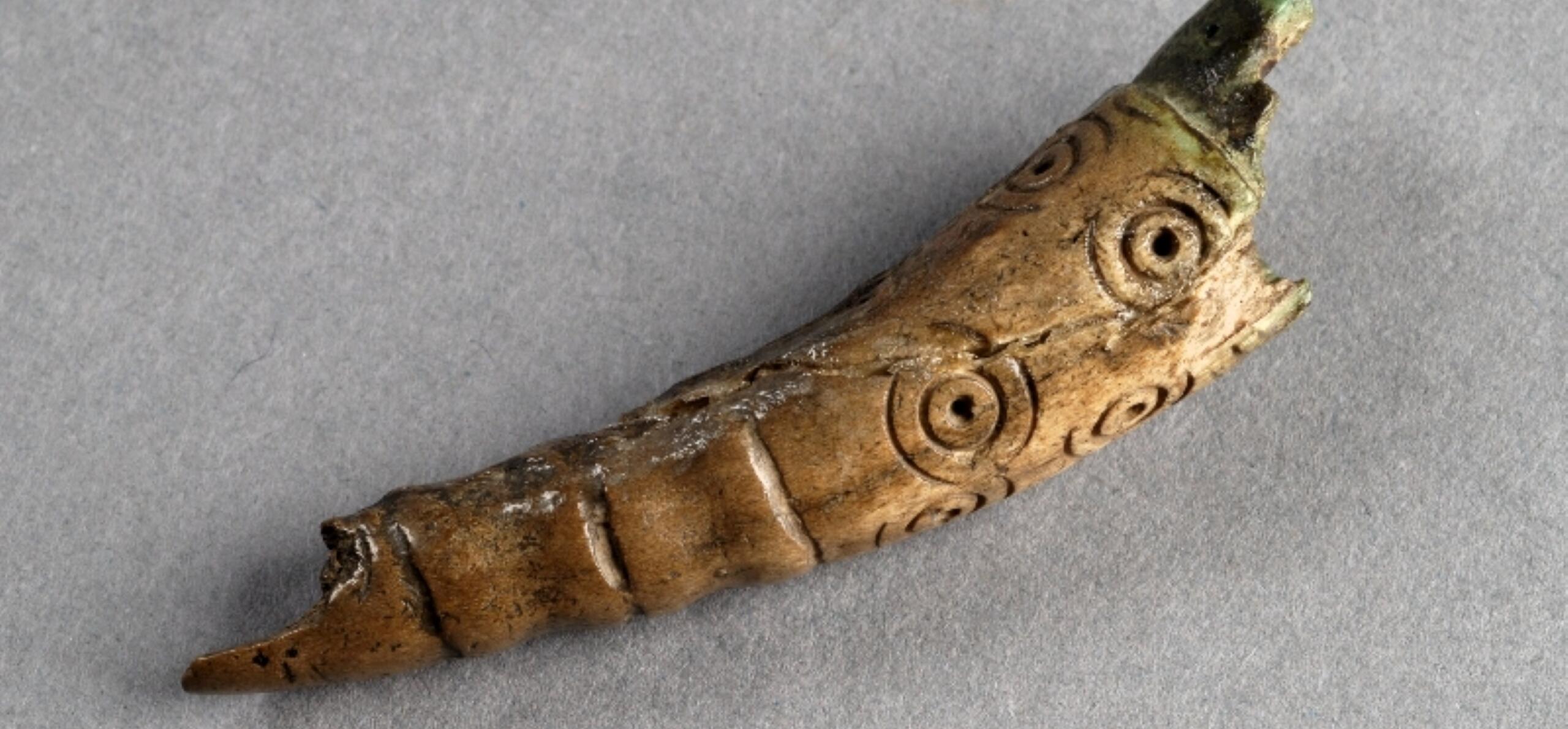We have been offering our loan service to schools around Reading for over 100 years.
Welcome to the next instalment in a series of blogs about our school loan boxes. This time round we’re looking at box AH30/B – Roman crafts and industries.
For any new reader’s I’m the learning assistant here at Reading Museum and I’m here to guide you through some of the most interesting boxes from our school loan box scheme.
If you’re interested, you can find the links to the previous blogs from this series at the bottom of the page.
The Roman period in Britain, then known as Britannia, lasted from the conquest by Emperor Claudius in 43CE (Common Era) to the Infamous ‘look to your own defences’ letter by Emperor Honorius in 410CE.
They brought with them a vast wealth of organised industry that hadn’t really existed in Britain before then. In this blog we're going to explore some of the items they left behind and how they were made.
Rim sherd of a Samian Ware Bowl

Figure 1 - Rim sherd of a Samian ware bowl, decorated with a running Hare (REDMG : 2008.888.1)
We’re going to start by looking at one of the pieces of Samian ware within this box.
Samian ware was a glossy red, fine pottery made in Gaul (the Roman name for France) and Germany. It was exported to Britannia from the mid-first to mid-third century AD. Owning Samian pottery was a huge sign of status, as it was much more delicate than most native British wares - a bit like your grandmother’s best China!
Samian ware was wheel-thrown before being dipped in slip (a mixture of clay and water); the glossy red colour was caused by iron oxide in the clay. Some Samian pots were decorated with moulded patterns, whereas others were left plain.
The sherd we are looking at (figures 1 and 2) is from the rim of a decorated bowl and shows a fragment of a running hare. This sherd is a very tactile object, and when handling it you can really feel the hare standing out in relief.
Samian-ware with this kind of embossed decoration would have been very popular and more expensive than the plainer versions.

Figure 2 - Rim sherd of a Samian ware bowl, decorated with a running Hare (REDMG : 2008.888.1)
The Romans created this type of decoration by attaching a mould to the potter's wheel. The clay was then placed inside, drawn up and pressed into the mould as the wheel rotated. The mould itself was multi-use, meaning that over the course of its life it could be used to create hundreds of pots.
Creating Samian ware was an extensive industry, with hundreds of manufacturing sites, many of which have now been excavated. One of the largest sites was La Graufesenque in southern Gaul where one of their kilns was capable of firing 30,000 – 40,000 vessels at once, reaching 1000°C, though most kilns would not have been so large.
Due to the quantity of Samian ware found, it has a very detailed typology (classification system) as there was a range of standardised shapes. The first major attempt to classify these vessels was carried out by archaeologist Hans Dragendorff, and while there are others who have continued this task, his typology is still used today. Having a piece of the rim is particularly useful, as archaeologists can use rim fragments to gauge the size of the original pot and match it to a specific type
Fragment of Roman Knife Handle

Figure 3 - Fragment of a Roman knife handle made of antler (REDMG : 2008.892.1)
Next we have a large fragment of handle from a clasp knife or folding knife, made from antler (figure 3). Unfortunately, we don’t know the providence of this object (meaning where it was found), however a nearly identical, complete version was found at Silchester in 1900 (figure 4) which is on display in our Silchester Gallery.
The blade of the Silchester knife is made of iron and is attached to the wider end of the handle which is bound with bronze. The blade is riveted at that point so that it could fold into the groove which is cut along the handle length. The handle is decorated with concentric circular patterns at the wider end and bands around the tapering point. There is also a bronze suspension ring attached to the handle.

Figure 4 - Complete Roman clasp knife, found at Silchester in 1900 and decorated with concentric circles and bands (REDMG : 1995.3.177)
Our fragment clearly belonged to a very similar knife. The pattern of concentric circles is the same and you can see the groove where the blade would have been tucked in, as well as some green staining around one end that indicates it also once had bronze binding there.
The Silchester knife is thought to date from the fourth century AD, so its highly likely that our fragment would date to the same period.
Mystery Item - Roman Ring Key?

Figure 5 - Ring Key of unknown origin (redmg : 2008.895.1)
Let’s finish up with my favourite item, and although it’s in a roman themed box, it might not even be Roman! In fact, it’s a bit of a mystery as to what this actually is!
Like with the knife handle, we don’t know the provenance of this item, so we originally thought it was a Roman ring-key or key-ring (not to be confused with the type you would put on your house keys!)
We now believe that this object dates to after the Roman period. There are a few clues as to why this is; let’s start by looking at the design of the item, which is rather unique and doesn’t look like a typical Roman ring key.
In 1989, Professor Hélène Guiraud created a typography for roman finger rings. She classified ring-keys as type 5, which was further divided into five subtypes on the basis of the key bit. Types 5A and 5B are the most common, whereas the others are quite rare.
However, the Ring-key from the box doesn’t fit into any of the categories. As you can see, the key blades protrude from the top of the ring (figure 5), whereas with a typical Roman example, that part of the key is attached at a right-angle to the ring itself. You can see this in the Roman key ring shown in figure 6, which is currently on display in our Silchester Gallery.

Figure 6 - Roman ring key found at Silchester in 1900, Guiraud type 5A - REDMG : 1995.96.9
Additionally, we can tell that the item from the box was made in a two-piece mould then stuck together. In contrast, Roman ring-keys were made by hammering the ring into shape and then using a saw to make the key blade.
Finally, you can see ‘248’ stamped very faintly into the surface of the blade. This is written in Arabic numerals, a numbering system we still use today, which was developed in India and didn’t reach Europe until the 10th century. Instead, as I’m sure you know, the Romans used Roman numerals, it is therefore very unlikely that this item is Roman.

Figure 7 - Close up photo showing the numerals '248' engraved on a Ring Key of unknown origin (redmg : 2008.895.1)
However, you make up your own mind! Do you still think this object could be Roman?
Our loan box service now has over one thousand boxes, covering a vast range of subjects from archaeology to taxidermy. Schools can use real objects to teach, which provides children with tangible and tactile connections to the past.
If you have connections to a school in the Reading area and are interested in taking part in our loans service, please contact us. We’d be delighted to open up the curiosities of the museum to you





